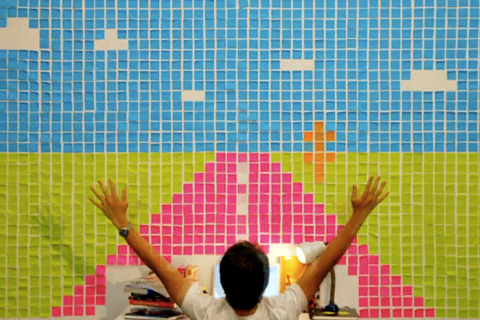My experimental video is inspired by many works of art published first on
YouTube, now being published on TV channels such as E4 (RudeTube) and channel 4. The concept of the stop-motion animation video is exploring the idea of a fully craft-driven
piece of work.
The whole video will use stop-motion animation until the very last scene, this will be using a normal video recorder.
The first few scene's will involve the main character (a wooden art figure) doing everyday tasks, like moving things around and clearing things up. The scene's in the middle will consist of the main character preparing for a party or gathering.
Unfortunately, only one person turns up. Another character (another wooden art figure - and the only one turning up) will join the main character for a party, each will do something different at the party. The last scene will consist of 2 people re-creating a scene from the stop-motion clips or creating a new scene to add onto the end.




